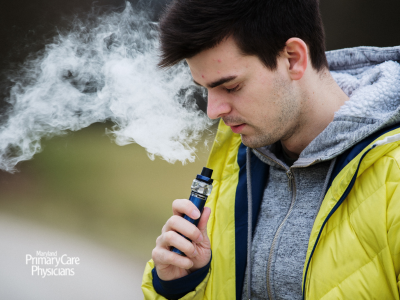15% of Maryland High Schoolers Vape – What Parents Should Know

Vaping among youth has declined in recent years, but it remains a significant health concern. Many parents believe that the worst of this trend has passed, but recent data is more complex. The 2024 National Youth Tobacco Survey reports that approximately 1.6 million middle and high school students currently use e-cigarettes, with 87.6% preferring flavored varieties like fruit, candy, and mint.
The Dangers of Vaping
- Deceptive Appeal: Flavored vape products, often marketed to children, make it easy to underestimate the risks. These seemingly harmless devices can deliver as much nicotine as an entire pack of cigarettes.
- Health Risks: Vaping introduces nicotine, a highly addictive substance, into the developing brains of adolescents, impairing memory and focus. Beyond addiction, vaping devices often contain harmful chemicals linked to lung damage and long-term respiratory issues.
- Gateway Risks: Vaping can increase the likelihood of using other tobacco products, leading to a cycle of dependency.
The Latest Insights on Vaping in Maryland
While the percentage of students vaping has declined in Maryland, the rates remain concerning. Advocacy groups, like the Maryland Tobacco Prevention Coalition, stress the need for continued public education and stricter regulation. Even with declines, vaping persists in new and potentially more harmful ways, such as the emergence of disposable devices loaded with high nicotine levels.
How Parents Can Make a Difference
- Start the Conversation: Begin with open, judgment-free discussions about vaping. Ask your child what they know or think about vaping, and share clear, factual information about its risks. Listen attentively to their concerns and experiences to build trust.
- Communicate with School Officials: Connect with your child’s school to understand its policies on vaping. Advocate for educational programs that address the risks of vaping and promote a healthy school environment.
- Address Underlying Issues: If your child is vaping, look for underlying triggers like stress, anxiety, or peer pressure. Offer counseling or connect them with resources to address these challenges. Mental health support is a critical step in helping them quit.
- Provide Support: If your child is ready to stop vaping, guide them toward professional help. Programs like the American Lung Association cessation tools or a visit to your primary care provider can be invaluable. Remind them that quitting is a journey, and you’re with them every step of the way.
- Set a Positive Example: Actions speak louder than words. Avoid tobacco and nicotine products yourself and demonstrate a healthy lifestyle that prioritizes well-being.
- Stay Informed: Stay up to date on vaping trends and products, so you’re prepared to guide your child through this evolving issue. Being informed equips you to respond effectively to their questions and challenges.
Your Partner in Prevention
At Maryland Primary Care Physicians, we’re here to help you navigate these challenging conversations. Reach out to your provider if you have concerns about your child’s health or want to learn more about available resources.





